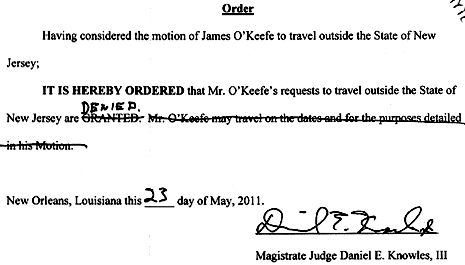In a BigGovernment.com post April 7, I shared news that videotapes recorded in downtown Oklahoma City April 19, 1995, were set to be the subject of a federal court hearing. Today, I share an update about the hearing that took place in Salt Lake City yesterday.
Judge Clark Waddoups, presiding in the U.S. District Court for the District of Utah, Central Division, “was all over (the) FBI,” according to Jesse Trentadue, the Utah attorney who used the Freedom of Information Act in an attempt three years ago to compel the FBI to turn over copies of surveillance video captured April 19, 1995, by more than 20 cameras operating in the vicinity of the Alfred P. Murrah Federal Building in downtown Oklahoma City.
Not only did Judge Waddoups deny the FBI’s Motion for Summary Judgment, Trentadue said, but he gave the Bureau until June 30 to do the following:
1. Confirm that FBI Information Director David Hardy told the truth in declarations he submitted to the court;
2. Describe the S-Drive and why it was not searched;
3. Explain why Evidence Control Units at Oklahoma City Field Office, FBI Headquarters and FBI Crime Lab were not searched; and
4. Describe how burdensome it would be to search OKBOMB case file entries for two weeks after the bombing for missing tapes?
Once Judge Waddoups gets the requested information/answers from the FBI, Trentadue said, he will revisit the motion to order the FBI to conduct additional searches.
BACKGROUND
Trentadue became interested in the Oklahoma City Bombing investigation after his brother, Kenneth Trentadue, died under suspicious circumstances while in custody at the U.S. Bureau of Prisons Federal Transfer Center in Oklahoma City a few months after the bombing.
As part of his investigation into his brother’s death and any possible links to the bombing, he used FOIA to request footage captured prior to 9:02 a.m. Central, when a truck bomb exploded, killing 168 people, and footage from the dashboard camera of Oklahoma Highway Patrolman Charles Hanger‘s vehicle showing the arrest of Timothy McVeigh. Though he received footage from several cameras, he did not receive any from the cameras on the Murrah Building itself.
In his Memorandum in Support of Rule 56(f) Motion for Continuance Pending Discovery, Trentadue explained that his lawsuit “is not about reports and documents” and is, instead, “a case about videotapes.”
It is also a case about the most crucial evidence in what was then the biggest investigation ever handled by FBI defendants: the bombing of the Oklahoma City Alfred P. Murrah Federal Building, he wrote. The videotapes at issue will expose that others were involved in that terrorist attack.
For more background, see Oklahoma City Bombing Videotapes Subject of Federal Court Hearing in Salt Lake City May 11, and my other reports about the Oklahoma City Bombing.

COMMENTS
Please let us know if you're having issues with commenting.